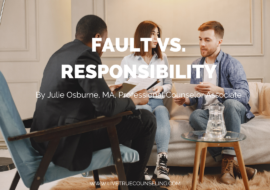Reaching Out Could Save a Life
Note: If you are suicidal and need immediate support, please contact the Multnomah County Crisis Line at (503) 988-4888, the Lines for Life Suicide Hotline at (800) 273-8255, or call 911.
On February 13, 2015, I received a text message from a friend while I was at work that directed me to a Facebook post. I saw the title of the post and my heart sank. As I continued to read the details of the post, I went into my office and shut the door behind me. I slumped down against the door and wept – for someone I don’t even know.
The post was about David Pajo’s suicide attempt. Pajo was my favorite guitarist (and still is, not counting my partner) and his band, Slint, put out an album in the early 90s called Spiderland that remains my all-time favorite album. Pajo is an extremely talented guitarist, playing with bands like the Yeah Yeah Yeahs, Tortoise, and Interpol. I even named one of my cats after him.
Hearing his music made me feel connected to him, even though I’ve never met him. There’s a song on Spiderland called “Washer” that Pajo plays on. It’s a sad song to begin with, and the music swells several times throughout the song only to not quite reach a crescendo – until around the 7-minute mark, when all hell breaks loose. At 7:06, Pajo’s guitar comes screaming in above the chaos of the music. At the very least, it gives me chills. Sometimes I even burst into tears when I hear it. When I learned of Pajo’s suicide attempt, I selfishly didn’t understand how someone who could make me feel such overwhelming emotion and who was so gifted could decide that life wasn’t worth living. He had so much to offer to the world!
The stigma around suicide
There’s a lot around David Pajo’s story that I didn’t understand at the time, but he’s been very open about it and has done several interviews about his suicide attempt. His story is also part of the Live Through This website along with other survivors’ stories and he was recently featured in the October 28, 2019 issue of People magazine telling his story alongside others.
He talks about his experience now, but like so many others who think about, seriously consider, or attempt suicide, he didn’t talk about it prior to his attempt. There’s a stigma not just around mental illness and distress, but around suicidal thoughts specifically. Someone who is thinking of suicide may not just be overwhelmed with the problems of life or chronically depressed, but their thoughts of killing themselves may bring additional feelings of guilt and shame. They may be leaving behind loved ones, including young children, and feel guilty that they couldn’t be (in their mind) the parent, son, daughter, friend, or partner that their loved ones need. They may feel shame for feeling despair, anxiety, or depression when social media tells us that everyone else is out living their best lives.
And the stigma doesn’t stop there. If we hear that someone is having thoughts of killing themselves, we often don’t know what to say. We’re so afraid of saying the wrong thing, thinking that something we say could tip the balance and send them over the edge. Or we don’t think that anything we say is going to matter. If we tell someone who is suicidal that they shouldn’t kill themselves, they’ll still do it anyway, right? Our words won’t change their mind. Or maybe we have our own problems and we don’t want to take on someone else’s. If we listen to someone who is having thoughts of killing themselves, don’t we then become responsible for them?
The importance of connection
One thing that I’ve read over and over in the stories of suicide survivors is how much a simple kindness means to them. There are some, like Pajo, who believed killing themselves was the only answer, only to be touched by the smallest of kindnesses. When Pajo was taken to the hospital after his attempt, a nurse asked him how he was doing. He told her that he wished he had died. In response, she told him that she was glad that he was here. He cried quietly, touched by her gesture. Those kindnesses, sent by loved ones and fans, led him to the point of being glad that his attempt failed.
When you know someone is struggling, reach out to them. Connection can save lives. People who feel despair and depression often try to isolate themselves, getting lost in their own negative self-talk. Reaching out and connecting with them can break that cycle and lend a new perspective. Hearing how they’re feeling can give you insight into their struggles and can give you an opportunity to empathize.
If someone reaches out to you (and even if they don’t), take the time and listen to them. You don’t have to solve their problems. Just listening and allowing them to tell their story can be a real relief for them. Asking about whether they have plans to kill themselves does not plant the idea in their head. It gives them a chance to share their story with someone they trust, even if they aren’t to the point of suicide. A little bit of kindness can go a very long way.
Things to be aware of if you think someone is suicidal
As a therapist, I received training in assessing for suicidal ideation. But here’s the thing: every situation is different and no one tool is definitive enough to tell you what someone is truly experiencing inside. It’s very possible that none of these factors are apparent or the person you’re concerned about denies having a plan and they may still be suicidal. Let me repeat that: this is NOT a definitive tool. This will NOT make you an expert in assessing for suicide.
That said, here are some questions you may want to ask if you think someone is contemplating suicide:
S – Specific: Does the person have a specific plan for how they might kill themselves? Usually, the more specific the plan, the more likely the attempt will be.
L – Lethal: If there is a plan, how likely is it to be successful? How quickly would the person die if this plan is used? The more lethal the method, the greater the danger.
A – Access: Does the person have access to the tools needed to be successful? How easy would it be for them to implement their plan? If the plan would be easy for them to implement and the tools are readily available, the risk is greater.
P – Proximity: How close are helping resources? Has the person shared the plan with others? If so, is that person able to intervene if needed? If others know about the plan and are able to intervene, the plan may not be successful.
If you think that someone is in danger of attempting suicide, trust your instincts and reach out to them. Call the numbers above with them. They may be caught in a fog of negative self-talk, believing that the world would be better without them and that they’re all alone. Even if you are able to see all that they have to live for and know they’re not alone, they may not be able to see it. Suicidal folks can often have tunnel vision and be so focused on these thoughts that they can’t see a way out. Your help may be their way out.
After an attempt
If someone attempts suicide and is not successful, they may continue to struggle. David Pajo has not lost the feeling that he’s happy he’s still here, but that’s not every survivor’s experience. The stressful situation may not be resolved, resilience may be low, depression and despair may continue. There may still be pressure to be perfect. Some survivors still experience impulses to kill themselves and have to find ways to ride out these impulses. Continue to check in with these folks. Talk about suicide and say the words – it’ll send the message to the survivor that you’re not afraid of their experience. Talking about suicide helps to reduce the stigma around it. If the person still struggles, medication and therapy could be helpful.
I’ve learned more about suicide through David Pajo’s story and through my training as a therapist. I’ve read stories from survivors and understand how complex this issue is. We need to start talking about it more – all of us. Despair, depression, and situational stressors are experienced by everyone. It’s part of the experience of being human. For some of us, these become so overwhelming that we can’t see any other relief than suicide. Every story is different and not everyone can be saved. But we owe it to ourselves and our loved ones to reach out and connect with those who are struggling. I’m so happy that David Pajo is still alive. Even though I don’t know him personally, I’ve still reached out to tell him that a few times. Every connection counts.
References/Further Reading
Coney, B. (2015, March). The Road to Recovery with Slint’s David Pajo. Retrieved November 3, 2019, from http://thethinair.net/2015/03/the-road-to-recovery-with-slints-david-pajo/.
Stage, D. R. L. (2018, October 25). David Pajo. Retrieved November 3, 2019, from https://livethroughthis.org/david-pajo/.
Truesdell, J., & Herbst, D. (2019, October 17). ‘It Could Be Any One of Us:’ Suicide Attempt Survivors Share Their Stories in Hopes of Helping Others. Retrieved November 3, 2019, from https://people.com/health/suicide-survivors-live-through-this/.
Jenny Larson loves her work as a therapist at Live True Counseling and as a Volunteer Counselor at William Temple House. When not seeing clients, she can be found reading psychology books and celebrity memoirs, watching bad (good) 80s movies, and sewing or baking. While self-identified as a cat person, she also has a fondness for dogs and other animals.










Write a Comment